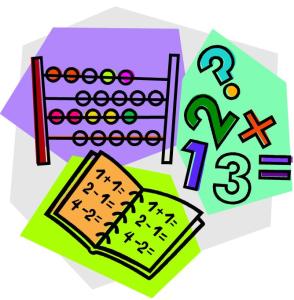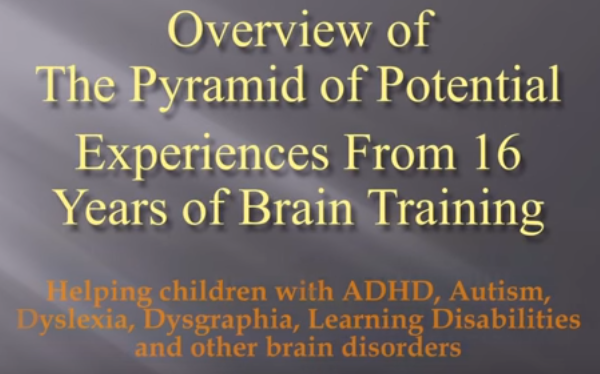Who cannot possibly reach the goals set for them? Who has to teach children who by definition cannot be taught? Of course, the special education teacher. But it doesn’t always have to be this way!
The children in special ed who have the designation of learning disabled may have a fairly low IQ score, or are average but cannot learn easily. In order to succeed – which means they can pass courses – they are given a lot of help. They have smaller class sizes, less work, more time and other accommodations. But that does not make a change in how they learn.
Today we know of the concept of neuroplasticity – that the brain can make new connections at any time in life. This means that IQ can improve.
Wait; WHAT??!?
Yes. Our very tough students, who we drill math facts and sight words into day after day but they don’t stick, can actually improve their capacity to remember, attend, and process. Yes, you, the special education teachers who love your students and hate to see them suffer, can have hope for your charges.
Is there evidence that IQ can change? Of course there is research; see https://www.psychologytoday.com/files/attachments/154643/tpr-vol61-no2-cassidy.pdf by Cassidy, Roche & Hayes, 2011. But you know it can improve when we look at Gabby Gifford who has recovered so well from a gun shot wound to the head. This is an obviously extreme case, but after intense occupational therapy, physical therapy and speech therapy, she regained her ability to speak and live a functional life. Without such therapy, she would still be lying on her hospital bed, unable to move or request water.
With this in mind, doesn’t it seem like it should be simple to improve the ability of a person with Dyslexia to read? With Dysgraphia to write? With Dyscalculia to do math? It is!! This is the area in which I have been working for the past 16 years. Yes, it is simple to improve the brain, but it is not easy.
First I must tell you that there is no silver bullet. Although the system I will describe is integrated and comprehensive, has been quite successful, and has helped improve about 95% of the cases I have seen, there remains a couple of mystery cases.
In the first case I had, over two years of work, this fourth grade student’s IQ score raised by 20 points, and she was out of all remedial classes. She eventually graduated from a private 4 year year college with no accommodations and no tutors with a GPA of over 3.0. A more recent young girl was in 5th grade when I worked with her. She entered Middle School with no IEP or Resource Room and by the end of the year was on the high honor role. This work is life-changing; even life-saving! She is a senior applying to college now.
You might think that I must be an amazing teacher (perhaps I am, but I honestly don’t know) and that only I can get these results. So read further to hear from other educators and their experiences.
Just a quick note from California. I have a student that a year ago was basically a selective mute on the Autistic Spectrum. I have put a lot of work in class working in the Moro and can report that she changed like a light switch coming on. She is speaking in class, she will transition independently, is reading basic readers, and is exhibiting significantly fewer behaviors to the point that we may be removing the 1:1 behavioral specialist from her IEP.
Mark S
Over the years I have seen that no two cases are exactly the same. However, the journey has similar elements, and those elements have been put together into the system I call the Pyramid of Potential.
In order for the brain to develop, and new connections to be made for permanent learning, you must start with proper nutrition, and low stress. Proper nutrition includes low sugar, omega 3 fatty acids, and sufficient protein at every meal. Low stress is important because trauma or highly stressful situations can damage the connections in the brain.
Neuro-development for kids who struggle in school happens by re-creating the early stages of development to open the pathways to the higher cognitive portions of the brain. This is done through simple physical exercises that take less than 15 minutes a day, and that integrate the primitive reflexes that babies are born with. For example, if the Moro reflex is not integrated, a person may have hypersensitive hearing, or someone who still has the Tonic Labyrinthine Reflex may have difficulties with telling time, or really understanding the passage of time. Integrating the Spinal Galant reflex sets the brain up for improving memory. More information can be found at http://www.pyramidofpotential.com/primitive-reflexes.
Dear Kathy,
My daughter is 7 and struggling a lot in school. She cannot do any math, has difficulty knowing where she is at when she is reading. She has troubles with writing and composing anything to write. I did these exercises with her and after a week, she was up to reading 65 words a minute (she was at 30 a minute prior) and she is recalling more math. I am very excited about this.
Sincerely,
Laura Kenney, MOTR/L, CSRS
Once the pathways have been opened, the sensory motor system can be more easily remediated. If there are auditory issues, sensory integration issues, or dyspraxia (poor motor control), working with an occupational therapist who deals with this and who gives listening therapy can really help. Speech and language pathologists know how to help with the auditory issues as well. Vision therapy is given by behavioral or developmental optometrists, who have additional education beyond your average optometrist. If vision therapy is still necessary after occupational therapy, the length and cost of therapy is reduced by completing the OT first.
Once the neural pathways are opened and the body is better put together, cognitive training is the next best thing to do. This typically trains the brain to do the skills necessary for academic work that may be lagging, such as memory, processing speed, attention, and logic. The training must be intensive. If it is too easy, the brain does not change because the connections were already there. If the training is too hard and frustrating, the brain shuts down. Challenging work is between easy and frustrating, and is engaging. The training must be done daily for several months in order to make permanent increases in IQ – just like a habit cannot be done once in a while or for only a couple of weeks. With some programs guaranteeing a two year increase in a deficient skill within three months of training, it is absolutely worth it!
November 19. 2015
At the beginning of class last year, I hesitantly sacrificed 10 – 12 minutes to do the Maintaining Brains Everyday exercises. I soon found out that I was not sacrificing one moment of time! Not only were we exercising, but we were getting through the entire lesson cycle! My students were more focused and able to remember what I was teaching them! I noticed improved reading, spelling, and handwriting as well as an overall improvement in their classes. Teacher’s started commenting on how much better they were doing in class and wanted to know what we were doing differently. But most of all, the student’s themselves were excited to share with me the changes in themselves. They noticed a huge difference from the inside out!
But what I am amazed about this year is that it all “stuck”! My students are much easier to teach this year. I remember saying, “I can teach them to read, but I don’t know if they will ever be a good speller!” That too seems to be changing. At least now, they can remember the rules and why they have to apply them. Last year, I also incorporated Kathy’s Growing Brains Phonemic Awareness using a metronome with my class. They loved it because they could see how they were improving and were able to do things at much higher speeds. Now, whenever we move from one kit to another, we spend very little time on phonetic spelling and can go right to situational spelling and word formulas.
Carol Crawford, CALT
Now you know that the most difficult job can also be the most rewarding!! Imagine having the power and ability to take a frustrated learning disabled child from having low self-esteem and little hope to being on the honor role with no outside help! It is possible, it has been done.
Good Morning Kathy!
As promised, I wanted to give you an update on how our program has progressed at Lakewood Elementary School (Twin Lakes Wisconsin). Our team of three trainers began by working for six weeks with a pilot group of two 3rd graders. We concentrated on the moro and palmar primitive reflexes and the working memory and processing speed cognitive skills.
Here are the results of our most neediest student after just six short weeks:
Skill: Pretest > Post (Age equivalent scores)
- Processing Speed: 5 > 7.9
- Working Memory: 6.3 > 7.5
- Long Term Memory: 5.5 > 6.8
- Visual Processing: 5 > 5.2
- Auditory Processing: 7 > 8.5
- Logic & Reasoning: 5 > 9
- Word Attack: 7 > 11.8
Clearly, we have a lot going on here in terms of brain based interventions, and I want to sincerely thank you for your help throughout the process. Please let me know if you have any questions!
Have a nice day!
Ryan McBurney
For more information, go to http://www.pyramidofpotential.com. The program Growing Brains Everyday includes the steps from the Pyramid of Potential in a single 150 day curriculum, which requires only 15 minutes a day.
Kathy Johnson, MS Ed has been improving brains since 1999, wrote The Roadmap from Learning Disabilities to Success and several other books, curricula and DVDs, does professional development for PESI, Inc., schools and clinics, and volunteers with older adults teaching a memory improvement class. She resides with her husband in Saratoga Springs, NY.



 “When our very active daughter started pre-school, it was hard on her. She couldn’t sit still, she was constantly looking around the room, and her pencil and scissor grips were so poor she had trouble printing and cutting. As she entered elementary school, it didn’t get any better. Our outgoing, vivacious child was very shy and withdrawn in the class room. She was very bright, but we worried she may have ADD or ADHD. A special ed teacher I know suggested we make an appointment to see Kathy Johnson, founder of Pyramid of Potential and Brain Advancement Training. We did and with Kathy’s help our daughter’s life was turned around without drugs. Today she is a popular middle-school, honor student, who plays two instruments, and figure skates.”
“When our very active daughter started pre-school, it was hard on her. She couldn’t sit still, she was constantly looking around the room, and her pencil and scissor grips were so poor she had trouble printing and cutting. As she entered elementary school, it didn’t get any better. Our outgoing, vivacious child was very shy and withdrawn in the class room. She was very bright, but we worried she may have ADD or ADHD. A special ed teacher I know suggested we make an appointment to see Kathy Johnson, founder of Pyramid of Potential and Brain Advancement Training. We did and with Kathy’s help our daughter’s life was turned around without drugs. Today she is a popular middle-school, honor student, who plays two instruments, and figure skates.”



